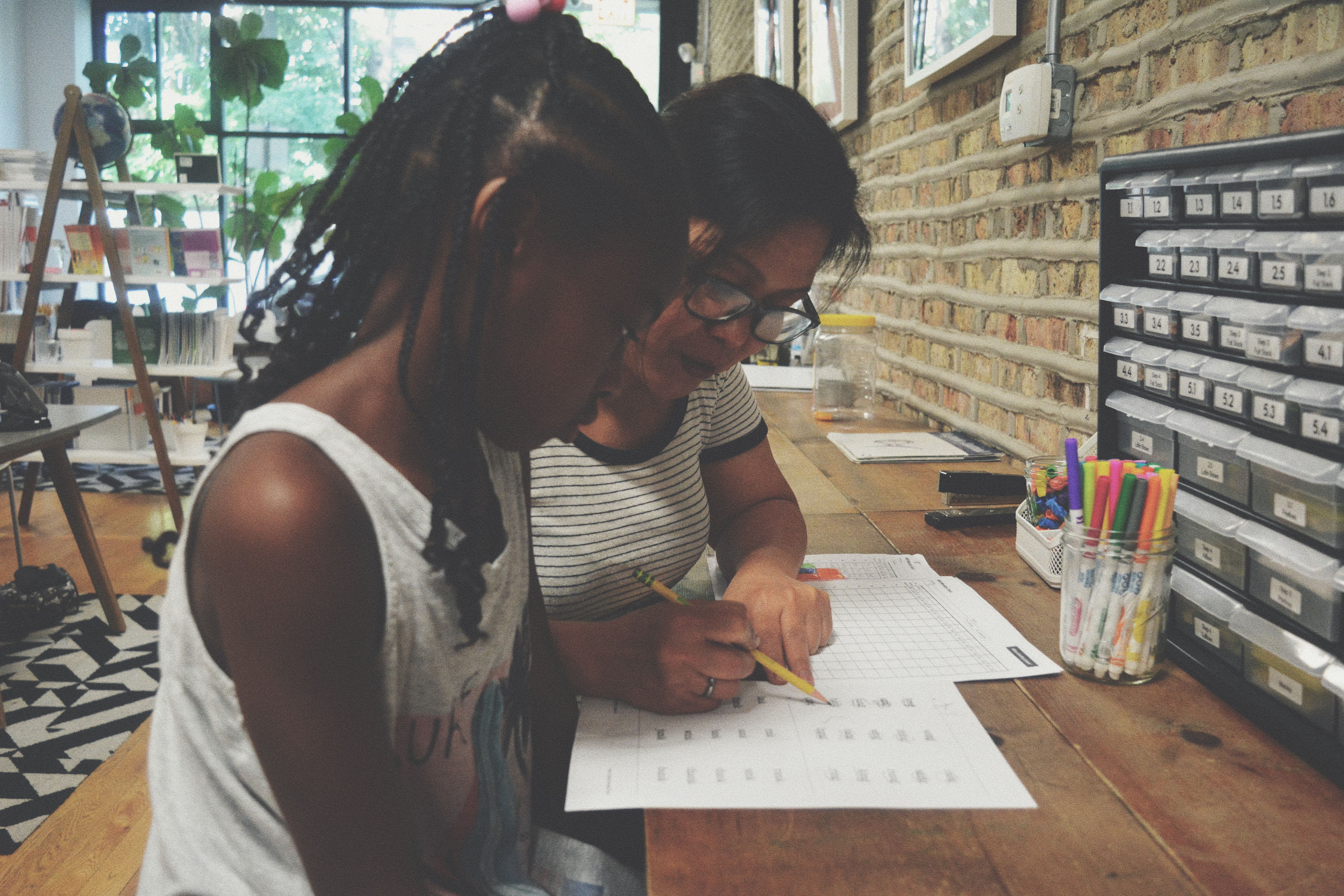
.avif)
What Dyslexia Looks Like
And What You Can Do to Support Your Child at Every Age
“My child is so smart, and she’s working so hard. Why is reading this difficult?”
Have you ever thought that? Maybe that’s where your mind is right now. If so, you’re not alone. What you’re noticing in your child has a name – dyslexia – and recognizing it early is the best way to ensure children get the support they need.
Dyslexia is a processing difference that affects how the brain absorbs language. It doesn’t mean a child isn’t bright; it means a child is bright in different ways. A dyslexic brain, just like every other brain, will be gifted in some areas and will struggle in others.
But our brains can grow, change, and adapt: dyslexic children can learn to read. They just need to learn in a different way, and it will take time.
Here’s what dyslexia can look like at every age, and what steps to take next.
K-2: The Early Years
What you might notice:
- Struggling with rhyming or blending sounds
- Confusing letters like b/d or p/q
- Slow to remember letter names and sounds
- Avoiding reading, saying it’s too hard
- Difficulty recalling the right words
What’s really going on:
Your child’s brain learns sounds and symbols differently. These are early signs of a reading difference, but not a reflection of intelligence or effort. Quite the opposite: while learning to read is taxing for all young brains, the dyslexic brain must work extra hard to interpret written language.
How to help:
Read aloud with your child, celebrating effort over accuracy. Choose rich, thoughtful, fun books that foster a love of reading while building vocabulary and background knowledge.
Book a dyslexia screener with Redwood Literacy. We’ll work with you to book a time that works for your schedule. It’s never too early to screen for dyslexia.
3rd–5th Grade: Building Readers
What you might notice:
- Reading slowly or guessing at words
- Struggling to spell even familiar words
- Writing less than they can say out loud
- Avoiding homework
- Not reading in front of others
- School refusal
- Concern about reading levels from school professionals
What’s Really Going On:
Early on, students are learning to read, but by this age they’re expected to “read to learn.” For a dyslexic child, reading is still hard work — so they fall behind despite strong thinking skills. They’re able to comprehend the content of the text, but the text itself is a barrier.
How to Help:
Ask about Structured Literacy instruction at your child’s school. This could mean “print-to-speech” curriculum like Orton-Gillingham and Wilson Reading Systems or “speech-to-print” like Spell-LINKS or UFLI. If not available, hire a specialized educator to either walk you through how to help your child at home (starting at $49 per month) or deliver the intervention directly to your child at the minimum required dosage (starting at $600 per month). Pair audiobooks with print to build confidence and strengthen comprehension.
6th–8th Grade: The Hidden Years
What You Might Notice:
- Bright and articulate, but grades are dropping
- Spelling and writing are challenging and inconsistent
- Spending hours on homework with little output
- Avoiding reading
- Emotional breakdowns before, during, or after the school day
What’s Really Going On:
Dyslexic students this age are often compensating with memory and context clues — they read words not by decoding the letters but by remembering the words visually, or by guessing based on the rest of the sentence. Navigating the written word this way is exhausting, and fatigue is taking a toll. Middle school students are deeply aware of the ways they’re different from their peers – they may feel that everyone in class can read but them, which can lead them to pretend the challenge doesn’t exist.
How to help:
Introduce assistive technology (text-to-speech, speech-to-text). Build executive function supports like Frostig’s Six Success Attributes. Celebrate your child’s strengths. Ensure they work with a specialized instructor to fill gaps and build foundational literacy skills with a curriculum like the Wilson Reading System® or SPELL-Links™. Help your child understand that it’s common to have a hard time with reading – and everyone else in the classroom has something they’re struggling with too.
9th–12th Grade: Smart but Stuck
What You Might Notice:
- Can discuss ideas brilliantly, but writing is incomplete or disorganized
- Grade-level texts are inaccessible
- High anxiety about timed or reading-heavy tasks
- Struggling to write essays or complete long reading assignments
- Missing homework
What’s Really Going On:
Fluency never became automatic (automatic fluency means reading naturally with minimal effort), so academic demands feel exhausting. When decoding individual words is taking mental energy, the brain can’t focus on comprehension or absorption. These students often internalize shame or self-doubt.
How to Help:
Ask for accommodations at school – extra time, audiobooks, dictation tools, text-to-speech/speech-to-text tools. Using assistive technology tools will preserve cognitive energy for higher thinking tasks like comprehension. Focus on strengths: project-based learning, verbal expression, leadership. And ensure your child has a formula to support multi-paragraph essay writing (free to access here).
Adulthood: Resilient but Tired
What You Might Notice:
- Reading slowly, avoiding long documents
- Struggling with spelling or proofreading
- Excelling in verbal communication and big-picture thinking
- Feeling misunderstood or devalued in the workplace
What’s Really Going On:
Adults often thrive once they can structure their work around their strengths and use technology effectively. Dyslexia doesn’t go away, but the brain is adaptable – it can form new neural pathways that make hard things easier.
How to Help:
Use reading and writing tools unapologetically. And remember, your brain’s creativity and empathy are superpowers. Sign up for a 1-1 session with an Assistive Technology Specialist at Redwood Literacy to learn new tools individualized to your needs. Redwood can also screen you for dyslexia, giving you the language to understand your brain and advocate for yourself. And study up on Frostig’s Six Success Attributes to ensure you’re empowering yourself.
Next Steps with Redwood Literacy
You don’t have to navigate this alone, and you don’t have to guess what your child needs. Redwood is here to guide you — every step of the way. Here are your next steps:
1. Watch a Free Webinar
Learn 24 quick, easy strategies to help your child thrive at home and at school.
Based on Frostig’s Six Success Attributes, which are drawn from over 40 years of research on how kids with learning differences build lifelong confidence.
Watch the Free Webinar by subscribing to the free tier of Redwood @ Home.
2. Get Clarity Fast with a Reading Assessment
Within three business days, you’ll receive a detailed report showing where your child is in their reading development and what skills need the most support.
3. Choose the Best Support for Your Family
Every family’s rhythm and budget are different — that’s why Redwood offers flexible paths:
- Small Groups: a community of peers, affordable rates ($600/month)
- 1:1 Sessions: Fast, personalized progress ($1,200/month)
- At-Home Subscription: Expert guidance you can use flexibly if you have more time than budget (starting at $49/month)
Talk with a Redwood Team Member to figure out which program is right for you.
You Noticed — and That Matters
You noticed that your child is struggling, and that awareness is the beginning of your child’s success story. With the right support and instruction, kids with dyslexia become confident readers, thinkers, and leaders.

.svg)




